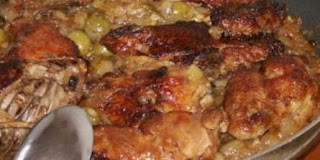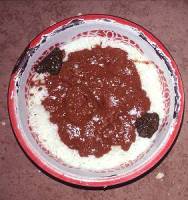FACTS ON GREEN TEA.
MOROCCAN TEA RECIPE AND TEA CULTURE
Traditionally the Moroccan tea is served three
times, and the amount of steeping time, gives each of the three
glasses of tea a unique flavor, as described in this famous proverb:
Le premier verre est aussi amer que la vie,
le deuxième est aussi fort que l'amour,
le troisième est aussi doux que la mort.
|
The first glass is as bitter as life,
the second glass is as strong as love,
the third glass is as gentle as death.
|
Morocco is one of the biggest tea importer in the
world. See how mint tea is being prepared, at the last section of this post.
TEN TIPS ON GREEN TEA -
1-How
many types of tea and what is green tea?
There are three varieties of tea- black, green and
oolong tea, and are sometimes infused with different flavorings
2-What about lemon,
mint or chamomile etc? They are herb tea not tea as in #1 above. Actual teas
are made from the Camellia
sinensis leaves
Herbal tea is derived from the roots/ leaves/
flowers/fruits of herbs/plants.
3-What is anti-oxidant and in tea?
Antioxidants are agents that protect body cells against
damage caused by free radicals , also reduce damage caused by LDL or ‘bad’
cholesterol in the blood.
Polyphenols
are natural plant chemical found in tea, which have strong antioxidant
properties. Tea leaves contain
a particular variety of polyphenols, known as CATECHINS.
4-How
to preserve these catechins “anti-oxidants”?
This is done by quick steaming or heating of the tea leaves to prevent
breakdown (oxidation) of the CATECHINS as in green tea. It is suggested
that green tea may have greater health benefits than black or oolong tea, which
was obtained through a longer processing time.
5-Why is LDL/ bad for heart and how is green tea on this?
According to Japanese research, green tea reduces the
levels of LDL, or ‘bad’ blood cholesterol, and this may reduce the risk of
coronary heart disease. Another study in Europe found that there’s 36% lower
risk of heart disease for tea drinkers.
Tea polyphenols prevent sticky blood, thus tea helps reduce
artery from blocking. Do not drink artificially flavored tea.
6-How to boil or
steep green tea?
Hotter water will produce a
bitter taste in green tea. It should be steeped around 80 to 85 °C (176 to
185 °F) for 2 minutes; the higher the quality of the leaves, the lower the
temperature. If you mix other herb tea for example, steep these herbs tea first and much
later, add in the green tea.
By comparison, Oolong teas, are steeped for shorter periods, sometimes less
than 30 seconds. Black Darjeeling tea, the premium Indian tea, needs a longer
than average steeping time.
7-How to
compliment the green tea benefits?
It is good to have a detox now and again, it is
important that your detox organs -
colon, liver, kidneys – are working well. This will compliment the anti
oxidants. Lemon is a great detox. Add lemon to your tea.
8-Other tips to
compliment the tea?
Investigations showed that the benefits of tea are lessened
when milk is added, so add honey instead. Drinking tea increases overall energy
level.
Use clay tea pots like the
traditional brewing pot and use spring water, as the minerals in spring water
tend to bring out more flavor in the tea.
9-How many times
can I steep my green tea?
High-quality green and white
teas can have new water added as many as five or more times, depending on
variety.
 |
| Moroccon tea pot |
TEA CULTURE is defined by the way tea is made and consumed
by the way the people interact with tea,
by the way the people interact with tea,
by the aesthetics surrounding tea
drinking and
by the aspects of: tea production, tea
brewing, tea arts and ceremony.
Don’t forget to drink Green Tea.
It so effectively increases your metabolism and reduces your appetite. It has
also been used for more than
4000 years in Chinese medicine, to cure ailments ranging from headaches to
depression.
Sensational? Read this- from Katrina of woman724- link here
“ My daughter switched her favorite chocolate
drink (MILO) to green tea about two months ago.. told me she lost 5 kg ! “
MOROCCAN GREEN TEA WITH MINT
The Moroccan people make tea performance a special culture in the
flower country. Moroccan tea- a sign of friendship, hospitality and tradition.
is commonly served with rich tea cookies and fresh mint leaves, in colorful tea
glasses and pots. Drinking Moroccan tea is not only a luxury of the tongue, but
also of the eyes.
-1 large handful of fresh mint leaves (Moroccan mint leave tastes
slightly different )
-6 teaspoons loose gunpowder green tea
(imported from China)
-Boil 1 liter of hot water between 70°c (158°F) to 80°c (176°F)
-Add 1/4 to 1/2 cup of
sugar
If
you have a Moroccan teapot or a heat proof teapot, set
the tea pot over low heat and bring the tea to a low simmer.
Then,
immediately remove from the heat, add mint leaves and sugar, allow to steep
several minutes more.
Pour tea in a
glass, then pour it back into the teapot. Repeat a few times,
to dissolve the sugar
Carefully pour the tea into the glass, from a
high distance. Doing this will help create a thin layer of
foam at the top of glass. When pouring, make sure the tea pellets stay inside
the pot.
Garnish with extra mint leaves, it will look
great if you use the proper Moroccan glasses.
Moroccan tea pots have long, curved
pouring spouts and this allows the tea to be poured evenly into tiny glasses
from a height. For the best taste, glasses are filled in three stages.
Traditionally the tea
is served three times, and the amount of time the tea has been steeping gives
each of the three glasses of tea a unique flavor- bitter, mild and
gentle. wiki and a few other sources



































pancake-moroccan.jpg)


